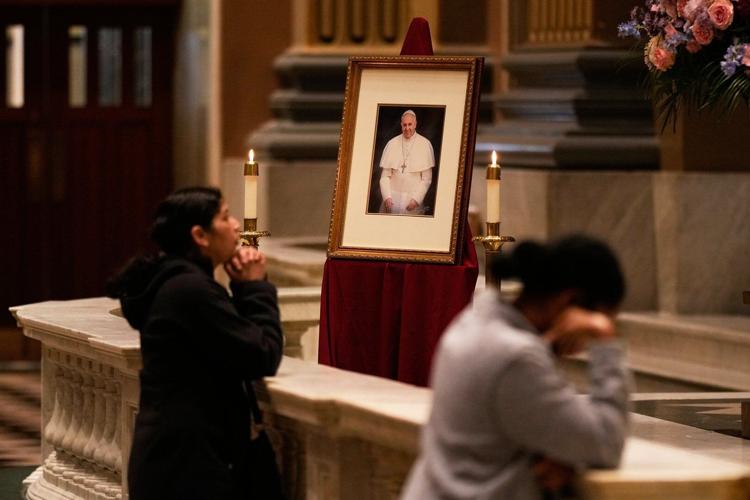Where Does The Pope Live? Unveiling The Vatican City Residence
Where does the leader of the Catholic Church reside? The answer, surprisingly, is not Italy, but the smallest independent state in the world: Vatican City. This tiny enclave, nestled within the heart of Rome, holds a significance far beyond its physical size, serving as the spiritual and administrative center of the global Catholic Church.
The question of the Pope's residence is intertwined with the unique nature of the Vatican itself. The Pope, as the head of the Catholic Church, resides in Vatican City, an independent city-state. This distinct status allows the Pope to govern the Church without being subject to the laws of any other nation. The Vatican is an ecclesiastical state, a sovereign territory, and an enclave entirely surrounded by the city of Rome, Italy. While geographically within Italy, it operates as a separate country.
Historically, the Pope's residence has evolved over time. Before the Vatican became the permanent seat, the Lateran Palace in Rome served as the primary papal residence during the Middle Ages. However, the political climate shifted, leading to periods of relocation. From 1309 to 1376, the papacy was situated in Avignon, France, a period known as the Avignon Papacy. The return to Rome and the Vatican marked a significant turning point in the Church's history.
The official residence of the Pope is the Apostolic Palace, also known as the Papal Palace or Vatican Palace. This complex houses not only the Pope's living quarters but also offices, chapels, and various administrative functions of the Holy See. It is a massive structure located within Vatican City, reflecting the Pope's role as the head of a global institution. Within the Apostolic Palace, Pope Francis chose a different living arrangement, opting to reside in the Casa Santa Marta, a guesthouse. This decision underscores his preference for a more modest lifestyle.
In addition to the Apostolic Palace, the Casa Santa Marta, built in 1996, serves as a residence for the Pope. It was constructed on the site of an ancient hospice for the poor, reflecting the Church's historical commitment to charity and care for the needy. Pope Francis's choice to live in the guesthouse highlights his personal values and commitment to simplicity.
The passing of a Pope initiates a unique period known as sede vacante, a Latin term meaning "the seat being vacant." This period is marked by deep mourning and meticulous rituals. The Camerlengo, or Chamberlain, temporarily oversees the Vatican's operations during this time, coordinating the preparations for the conclave, a gathering of Cardinals responsible for electing the new Pope.
Contrary to popular belief, the Pope does not reside in St. Peter's Basilica. Although the Basilica is a central place for the Catholic Church, and the location where the Pope often appears and celebrates mass, the Pope does not live there. His residence is within the confines of the Apostolic Palace in Vatican City.
The Vatican's independence is crucial. It grants the Pope the autonomy to govern the Church and engage in international relations without external interference. The Vatican City State maintains its own currency, postal system, and media outlets, reflecting its self-governing status. The smallest independent state plays a pivotal role in the global religious and political landscape, making the Popes residence in Vatican City a key element in the structure of the Catholic Church.
Throughout history, the residences of the popes have varied. From the Lateran Palace in Rome to the period in Avignon, France, to the Vatican, the Popes home reflects historical and political changes. The current residence of Pope Francis in the Casa Santa Marta reflects his commitment to simplicity and his desire to be connected with the community.
Pope Francis' lifestyle is a reflection of his values. As the Archbishop of Buenos Aires, he chose to live in a small apartment, indicating a preference for simplicity. His decision to live in the Casa Santa Marta and his dedication to prayer and work demonstrates his commitment to his faith. His actions reflect his personal values and commitment to his role within the Catholic Church.
Daniel Orton is an editor on the live news team at Newsweek, based in London, UK.
The following table provides a summary of key information about the current Pope:
| Attribute | Details |
|---|---|
| Full Name | Jorge Mario Bergoglio |
| Born | December 17, 1936, Buenos Aires, Argentina |
| Elected Pope | March 13, 2013 |
| Residence | Casa Santa Marta, Vatican City |
| Previous Roles | Archbishop of Buenos Aires (1998-2013), Cardinal (2001) |
| Order | Jesuit |
| Known for | Emphasis on social justice, mercy, and dialogue. Focus on the poor and marginalized. |
| Interesting Fact | First Jesuit Pope; First Pope from the Americas |
For more detailed information, you can consult the official website of the Vatican: https://www.vatican.va/content/vatican/en.html
The location of the Pope's residence is not only a matter of geography but also represents a history of the Catholic Church. The Vatican is a testament to how the institution has adapted throughout its existence. The Pope's role as leader of the Church has evolved, just as the place where he resides. The location reflects the Church's mission: the spiritual, the administrative, and the global reach.


